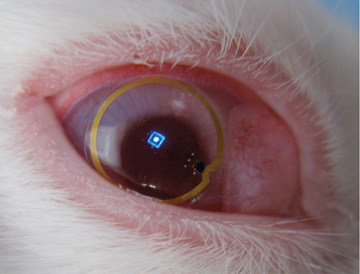In a move that could revolutionize the way we think of hands-free communication, scientists have invented a bionic contact lens that could display real-time news, emails and text messages only millimeters from your retina.
According to the study's authors, the possible applications the bionic contact lenses are myriad:
Drivers or pilots could see a vehicle's speed projected onto the windshield. Video-game companies could use the contact lenses to completely immerse players in a virtual world without restricting their range of motion. And for communications, people on the go could surf the Internet on a midair virtual display screen that only they would be able to see.
"People may find all sorts of applications for it that we have not thought about," Babak Parviz, UW assistant professor of electrical engineering said in a research announcement poste on the department's website. "Our goal is to demonstrate the basic technology and make sure it works and that it's safe."
In the joint study between the University of Washington and Aalto University in Finland, researchers safely tested the bionic display contact lenses on rabbits for up to 20 minutes with no adverse effects.
According to TIME magazine, the anesthetized animals could tolerate the wearable contact lenses for short periods of time while showing no abrasions or thermal burning.

Photo courtesy of the University of Washington
To create the bionic contacts, scientists installed a single LED light and wireless antenna into the contact lens, which is made from delicately thin materials, according to the Daily Mail.
But scientists still have plenty of hurdles to clear before they can can bring the Terminator-like lenses to the market. The device's small size means researchers only have enough space for one LED, making the display of complex information much more difficult.
Another challenge is powering the microscopic circuits inside the lens. Currently, the lens can only function if it stays within centimeters of its wireless battery.
"Our next goal is to incorporate some predetermined text in the contact lens," Praviz said in an interview with the BBC.
The study comes at a time when scientists are similarly looking to develop an alternative pain-free device to monitor glucose levels of diabetics by utilizing a sensor to read eye whites or tears.